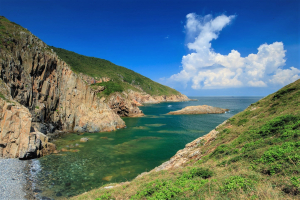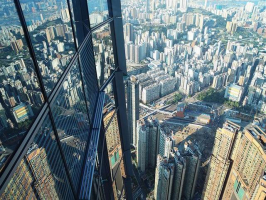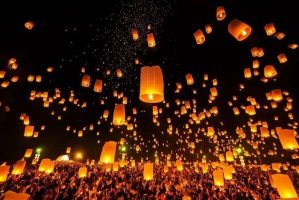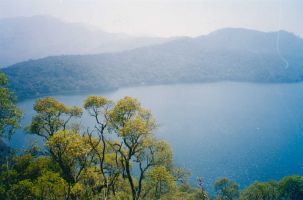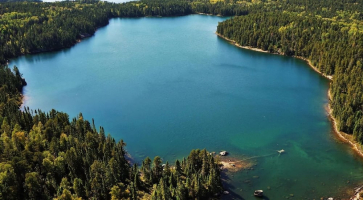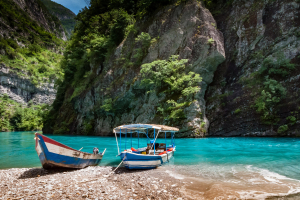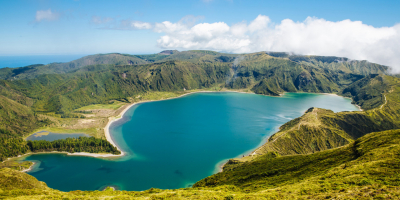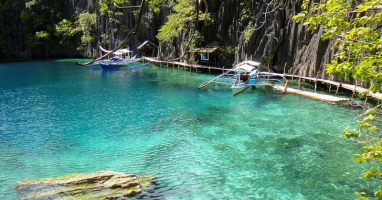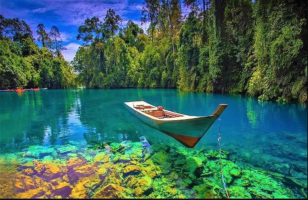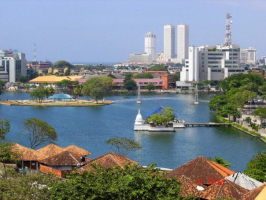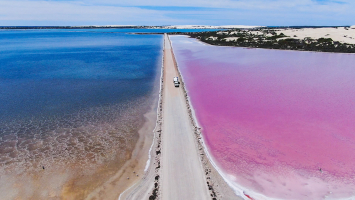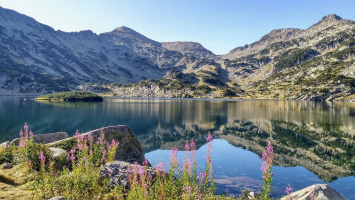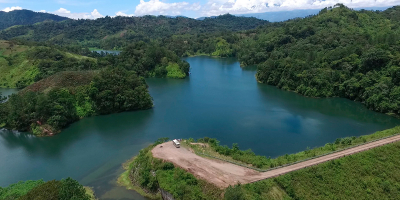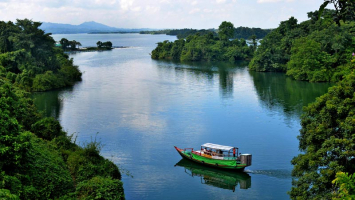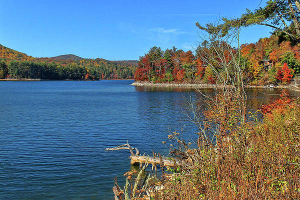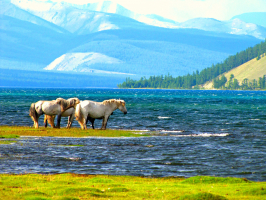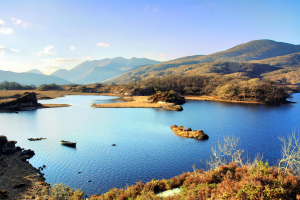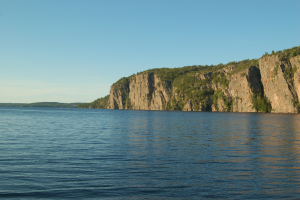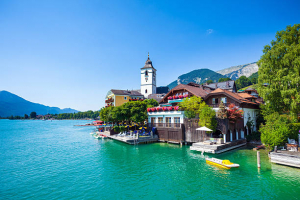Top 7 Most Beautiful Lakes in Hong Kong
Nothing may be more reviving in times of stress and anxiety than looking out over huge oceans and taking in their stunning deep blue splendor. Hong Kong is ... read more...never far from a sandy beach because it is bordered by the water on three sides. But occasionally, crashing waves and blustery gusts may be everything but peaceful, making you long for a more sedate way to appreciate the azure seas. Fortunately, Hong Kong is also peppered with various artificial water basins that serve as tranquil escapes from the rush of urban life. In our list of the most picturesque lakes and reservoirs in Hong Kong, we have something for everyone, whether they are looking for an adventurous adventure or a leisurely stroll by the water. Without further ado, check our list of the most beautiful lakes in Hong Kong now.
-
The Tai Tam Reservoirs are a well-liked hiking destination as well as a popular location for taking Instagram-worthy photos and soaking up some historical architecture. They are located amid the rolling hills and lush green sceneries of eastern Hong Kong Island.
Its well-known Waterworks Heritage Trail is a relaxing yet beautiful stroll through history, covering 22 officially recognized monuments that go back more than 100 years. The Tai Tam Tuk raw water pumping station, the four masonry bridges, and the Tai Tam Tuk reservoir valve house are noteworthy mentions.
The five-kilometer course can be finished in two hours thanks to well-paved routes and very mild inclines, but plan on it taking longer since you'll want to stop frequently to take in the breathtaking scenery and colonial waterworks facilities made of brick and stone! With these key features, Tai Tam Reservoirs was ranked one of the most beautiful lakes in Hong Kong.
Location: Tai Tam Country Park in the eastern part of Hong Kong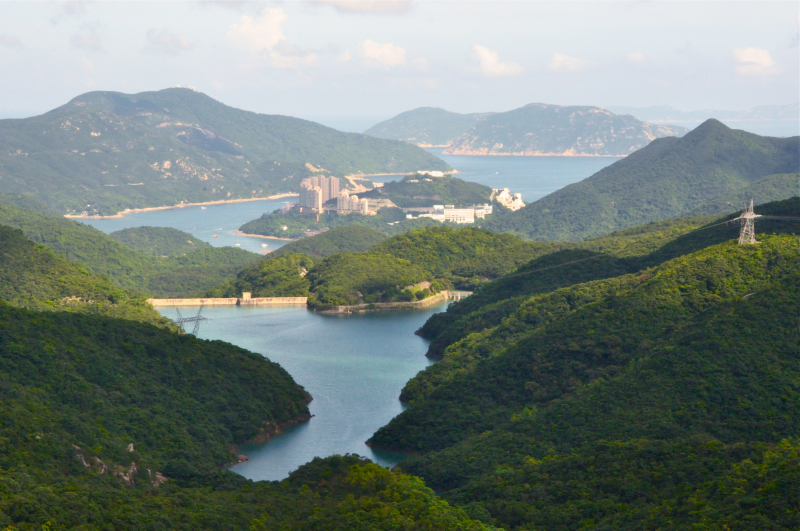
Photo credit: Wikipedia 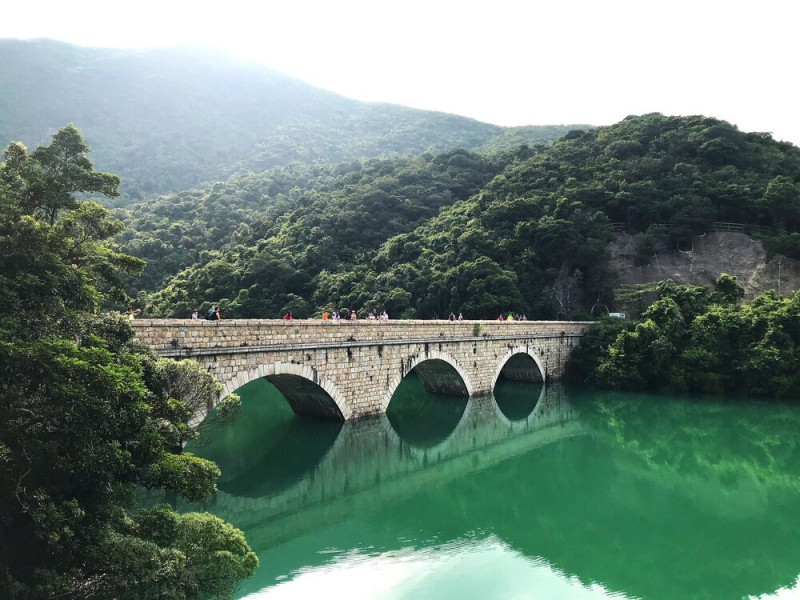
Photo credit: WanderingSnow -
Did you know that Hong Kong has a history of volcanic eruptions? Don't worry; the eruptions occurred 140 million years ago, but curious hexagonal rock columns - formed when molten materials cooled - remain to marvel at today. Other geological wonders add to the surreal setting, which is set against the serene backdrop of a vast reservoir that has since become a part of the Hong Kong UNESCO Geopark. Come on this short hike to High Island Reservoir and see Hong Kong like you've never seen it before!
Following the 1967 Hong Kong riots, when mainland China briefly cut off water supplies to the city, the local administration felt it would be smart to construct several sizable reservoirs for the city. Thus, a decade later, the man-made High Island Reservoir was created, blending with the natural beauty of its surroundings.
The West Dam and the East Dam, the reservoir's two main dams, are separated by about an hour. The East Dam is more away, but the trek is well worth it for its geological wonders. It is well renowned for its hexagonal rock columns, which were created when neighboring volcanic ash and lava cooled 140 million years ago.There's also a high sea cave and a strange dolosse wall, where thousands of geometric, jack-like concrete blocks are scattered along the water to protect against strong waves. Keep an eye out for the Po Chin Chau sea stack, where centuries of erosion have split the island apart, resulting in a rock face that resembles a massive pipe organ.
But perhaps the best part is that the hike is relatively easy, as the entire path is a smooth, paved road with no sharp inclines. The abundance of rest stops along the way makes the hike ideal for beginners and anyone who prefers a relaxing stroll to an intense workout.Despite the fact that the East Dam is the only part of the Hong Kong UNESCO Geopark that can be reached on foot, the reservoir is still quite remote. You won't find any kiosks or vending machines after getting off the bus at Pak Tam Chung, so stock up before you go. Remember to wear sunscreen because, while the path is level and smooth, there isn't much shade along it.
Location: far south eastern part of the Sai Kung Peninsula
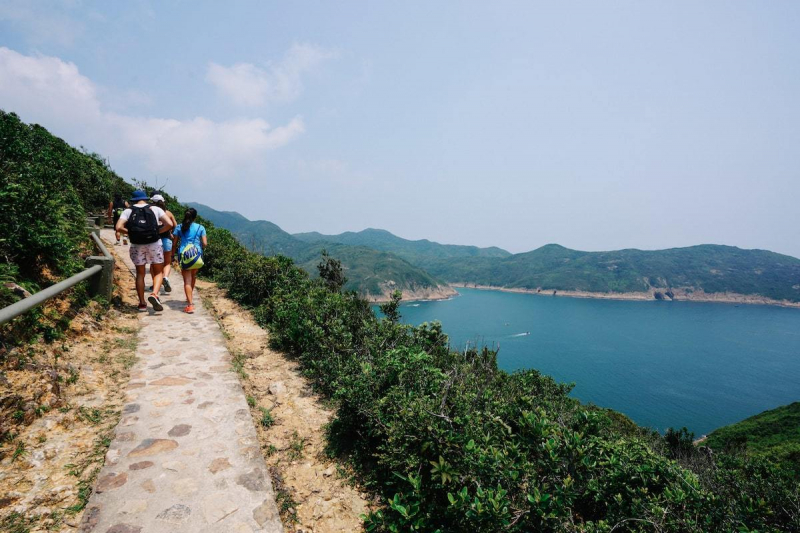
Photo credit: David Yeung 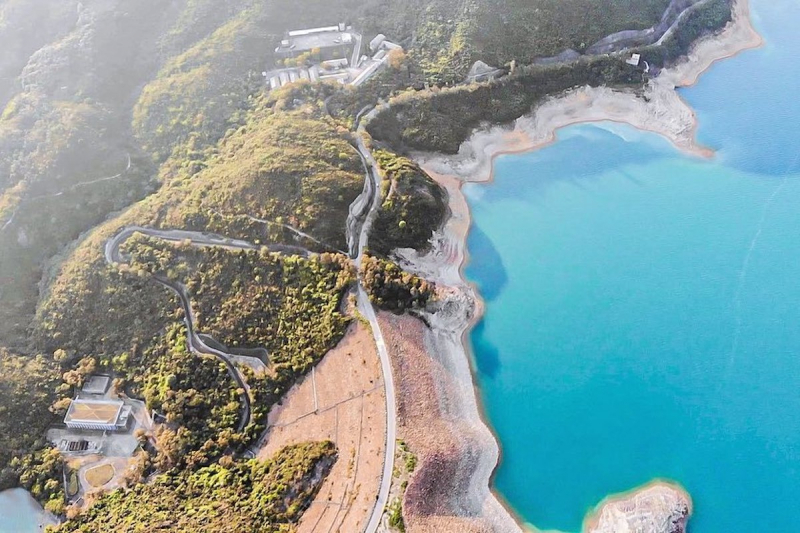
Photo credit: @9hike (via Instagram) -
The Plover Cove Reservoir, a convenient day trip location for nature lovers, is tucked away in the lovely Plover Cove Country Park. However, very few people would be aware of the skill with which it was built as well as its historical importance, which is especially pertinent given the social and political climate of today.
The Plover Cove Reservoir, the largest in area and second in volume among Hong Kong's many reservoirs, was the city's first freshwater coastal lake. In the 1950s and 1970s, when Hong Kong lacked inland water bodies to support its rapid population and industrial growth, the colonial British government began to look for alternatives in order to achieve self-sufficiency in freshwater supply. It began by building reservoirs to hold enough rainwater for the city's consumption.
Plover Cove is uniquely blessed with geographic advantages. By building a dam that would effectively serve as the fourth limb of a blocked off region, the cove, which is enclosed on three sides, might be completely cut off from the sea. The vacuum was subsequently transformed into a freshwater lake by draining the reservoir's seawater. The reservoir, which was built between 1960 and 1968, was intended to be a devoted protector of the city's vital freshwater resources. After it was finished, other significant reservoirs were built for related purposes, including the High Island Reservoir and the Lok On Pai Desalting Plant.
Unfortunately, Hong Kong has never achieved self-sufficiency in freshwater supply. In the aftermath of Hong Kong's return to China, the British government decided to begin purchasing water from China's East River in 1965. When it was finished, the Plover Cove reservoir served as a rain catchment system as well as a storage facility for water from the East River. Imported water gradually replaced local supply as the primary source of freshwater in Hong Kong. The reliance on imported water has since sparked heated debates, with critics fearful that such a practice would jeopardize Hong Kong's autonomy.
The Plover Cove Reservoir now rests serenely at the edge of Plover Cove, supporting a variety of freshwater species and meeting the demands of vacationing hikers. But at its core, it reflects the city's ongoing effort to maintain independence from outside forces. Take a moment to feel it the next time you're hiking past the Reservoir.
Location: Pat Sin Leng and Plover Cove Country Park
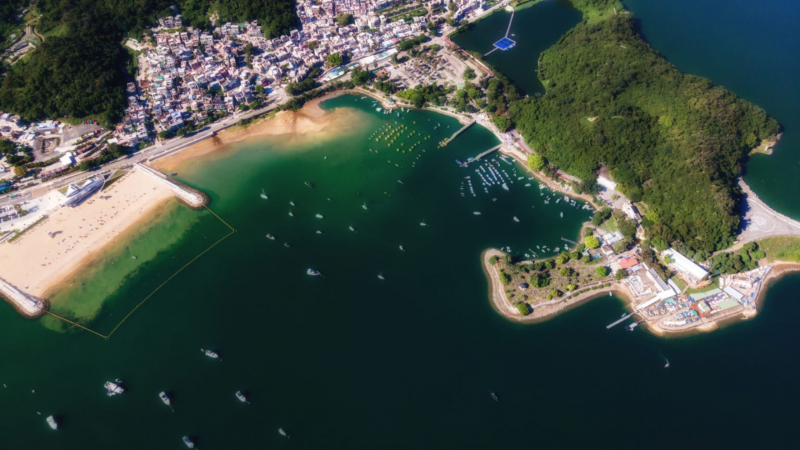
Bird eye’s view of Plover cove - Photo credit: hongkongfreetours.com 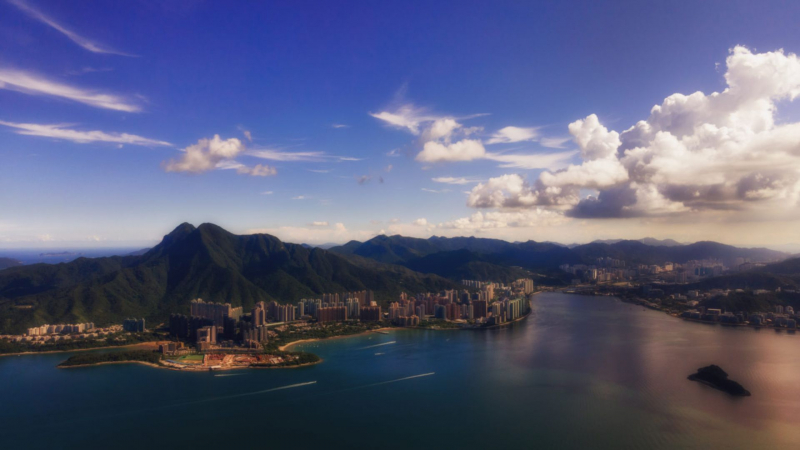
Photo credit: hongkongfreetours.com -
Shing Mun Reservoir, a well-liked family hiking location tucked between Tai Mo Shan and Kam Shan Country Parks, is the place to go to improve your picture-perfect memories. A variety of fauna, including butterflies, monkeys, cattle, and even wild pigs, call the reservoir region home. To fully experience this gorgeous setting surrounded by nature, stroll along the reservoir roads and paths. Stop by the paperbark trees for some Instagram-worthy pictures. Visit the War Relics Trail to see the remnants of the Second World War's hillside defenses if you're more interested in history.
A wonderful day out near Shing Mun Reservoir starts with a visit to the Pineapple Dam Nature Trail, which is enlightening and eye-opening. From the minibus stop, ascend the stairs to start a brief, kid-friendly trek amid the local flora and animals. Monkey groups were frequently visible at the country park, where they frequently hung around in the picnic areas in search of food. The name of the dam comes from the large number of Hakkas of the Cheung family who once lived in this region and founded multiple villages to cultivate rice and pineapples.
The main reservoir road is lined with white-colored paperbark trees, which get their name from their peeling bark and can grow up to 18 metres tall. Enjoy the soft sounds of birdsong and gently rushing water as you gaze at the row of paperbark trees that has now lined your path, making it an ideal location for photographs.
You can enter the "paperbark tree grove," a wooded respite, by turning off the main path to your right. Perhaps the most well-liked location in Shing Mun Reservoir for photos and movies, particularly wedding photos, is here. Take a moment to relax, snap a few pictures, and take in your surroundings. Don't miss this serene natural habitat, whether you decide to close your eyes and visualize yourself far away from everything or opt to take in the wonderful view from beneath the canopy of trees.
Take a brief two-minute diversion at the intersection at the top of the hill, and you'll find yourself with a breathtaking view of the reservoir. You are initially welcomed by a sweeping mountain horizon, which eventually unfolds as you progressively get closer to a pagoda. From this vantage point, the entire Shing Mun Reservoir is visible, with the striking Kwai Chung skyline in the background.
The Main Dam (also known as Gorge Dam) is important not only for supplying fresh water to Kowloon and Hong Kong Island, but also for the local flora and fauna that thrive along the reservoir's banks. From here, you can see how nature's soft flowing lines contrast nicely with the dam's clean symmetry to create an Instagram-worthy scene. Furthermore, the dam offers views of both Hong Kong's iconic Lion Rock and the city's highest peak, Tai Mo Shan.
On the Shing Mun War Relics Trail, you can travel through time. You can reach the Shing Mun Redoubt, a 12-acre citadel that spans the Kwai Tsing and Sha Tin neighborhoods, by ascending the short, easy steps that go up from the barbecue pits. The citadel was given creative trench names, such Shaftesbury Avenue, to help the soldiers navigate. Before the Second World War (from around 1937 to 1938), a number of defense fortifications, including trenches, military marker stones, and pillboxes, were built along the 250-meter trail to protect it against attacks from the north. Please make sure you have enough water before going to the War Relics Trail. There are vending machines and a water filling station near the toilet in the barbecue area right before the trail.
Enjoy a well-deserved break at Lo Tak Court in Tsuen Wan after a long day of learning about nature and history. You may find a variety of intriguing street food alternatives in this urban courtyard, such as take-out dim sum, Hong Kong-style fish balls, and egg waffles, among the snack booths and cha chaan tengs (traditional local cafes).
Location: Shing Mun, the area between Tsuen Wan and Sha Tin, in the New Territories
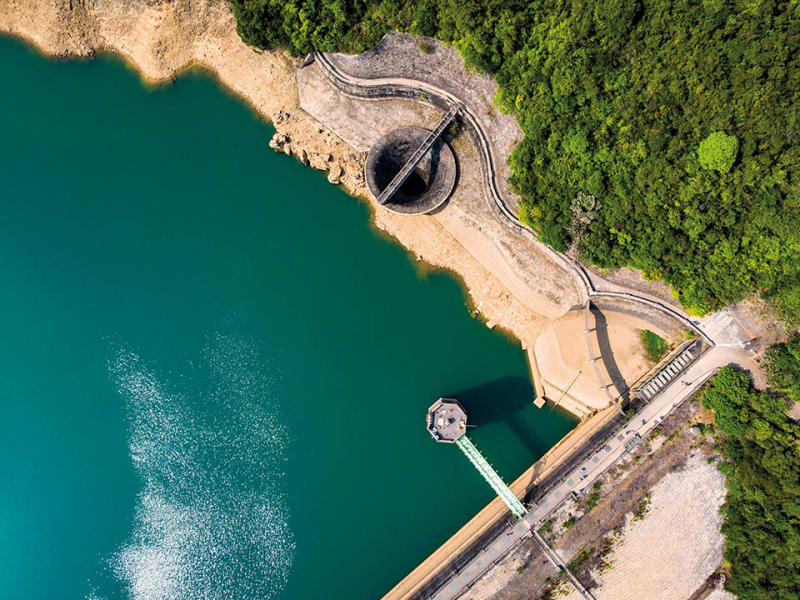
Photo credit: Hong Kong Tourism Board 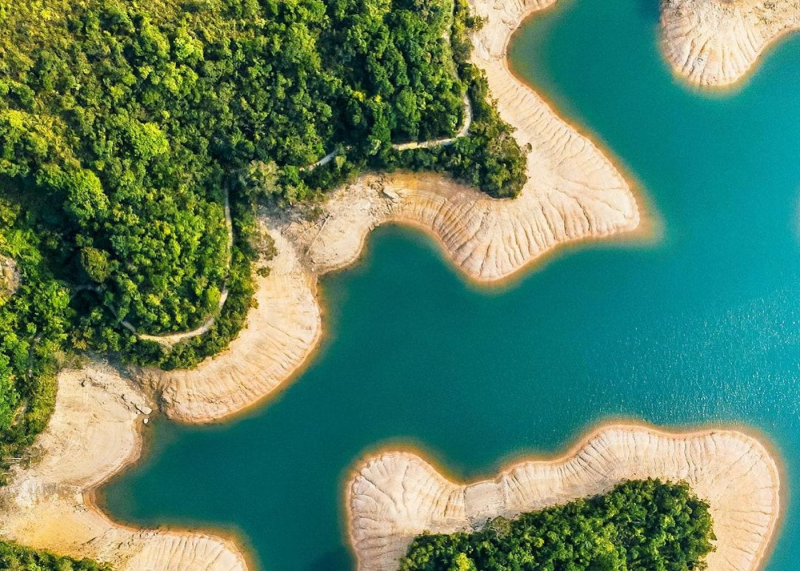
Photo credit: The Honeycombers -
One cannot help but be in awe of arresting natural sights like Taal Lake, which is located in the caldera of an active volcano in the Philippines, as well as the prismatic springs of Yellowstone, the imposing redwoods of California, the stoic cliff faces of Venezuela's Gran Sabana, and China's Wulingyuan Canyons.
Have you ever heard of a reservoir filled with countless islands among these stunning natural landscapes? Day-trippers flock to this remote part of Tuen Mun for a glimpse of nature that sprawls out before you like the fantastical panoramas of a James Cameron film. If you want to see the fabled sight of a thousand islands dotting the horizon for yourself, keep reading.
Tai Lam Chung Reservoir in Tuen Mun is the first reservoir built in Hong Kong following the end of World War II and is home to what is known as the "Thousand Island Lake" locally. The structure, which is more than 50 years old and is made up of four dams that cross the valley, took five years to build.
The marvelous geological formations in the waters of the Tai Lam Chung Reservoir, where one can gaze in awe at what appears to be a lake of countless small islands, are, of course, its main draws. What you may not have realized is that these islands were once hills, and their current state is the result of catchwater flooding the Tai Lam Chung Valley! Thus, its nickname was derived from the man-made Qiandao Lake, the original "Thousand Island Lake" in Zhejiang Province, China, which has 1,078 large islands dotting the waters!
The majority of the time, getting to the Tai Lam Chung Reservoir is more of a leisurely uphill walk than a hike. This hike is appropriate for visitors of all ages, including those with four-legged friends and furry babies, and is almost entirely paved (until you reach the Tai Lam Chung Reservoir Viewing Point). Be aware that accessing the Tai Lam Chung Reservoir Viewing Point requires little effort, if you want to reach the more remote viewing points, you should wear appropriate footwear because the descent can be hazardous due to the path being littered with sand and slippery areas.
The Tai Lam Chung Reservoir hike begins at So Kwun Wat Tsuen in Tuen Mun. So Kwun Wat Tsuen is a rural village located near the Hong Kong Gold Coast and is easily accessible by minibus from Tuen Mun Station. You can also take the 962B bus from Causeway Bay, the 252B bus from Tsim Sha Tsui, the 52X bus from Mong Kok, and the 53 bus from Tsuen Wan to Hong Kong Gold Coast and walk over to So Kwun Wat Tsuen. It is highly recommended to board minibusses 43 or 43S at the first stop at San Hui Market when traveling to Tai Lam Chung Reservoir over the weekend or on a public holiday because the minibus lines can be extremely long on these days.
Ascend the hiking trail until you see the Reservoir Islands Viewpoint illustrated signpost. Simply climb the rocky steps to the top! You've arrived at Hong Kong's "Thousand Island Lake," where sloping valleys open up to a sweeping vista of bobbing landmasses. You may have to wait a little longer depending on the day to get that epic "overlooking-the-reservoir" shot, as the Tai Lam Chung Reservoir Viewing Point can get quite crowded, especially on weekends and public holidays. Always use caution when photographing the cliff edge!
Although there are other, less accessible photo locations besides the clearly marked Tai Lam Chung Reservoir Viewing Point, we do not recommend inexperienced hikers to attempt them, especially without the proper heavy-duty footwear! They tend to lead downhill into slick terrain.
Location: Tai Lam Country Park, Tuen Mun District, New Territories, Hong Kong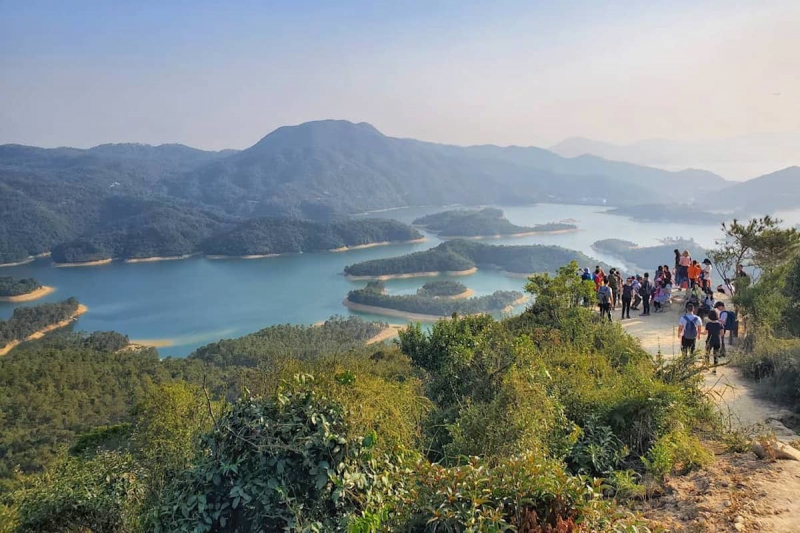
Photo: @debbykwong (via Instagram) 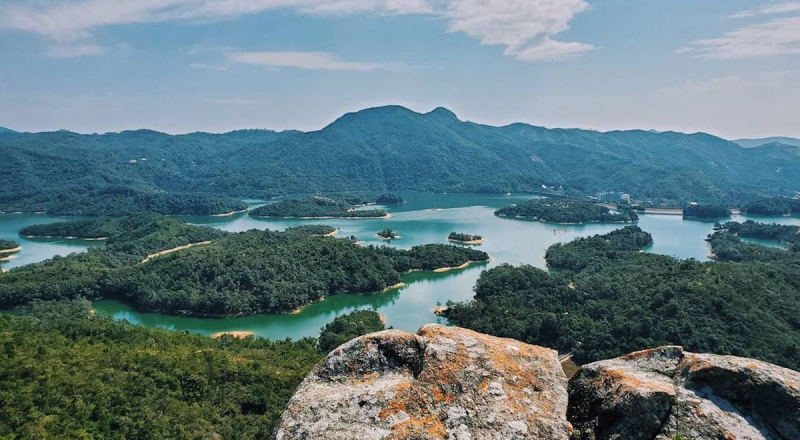
Photo: @lucas.fr.hk (via Instagram) -
Inspiration Lake is the beautifully groomed recreation area given to us by Hong Kong Disneyland, and it's completely free. It's ideal for families, a romantic picnic date, or an afternoon in the most picturesque setting.
Inspiration Lake is one of those rare places in Hong Kong that exudes natural beauty while remaining uncrowded. The man-made recreation center, located in a valley on Lantau Island, is surrounded by evergreen mountains and appears so unrealistically serene that you'd be forgiven for thinking it was part of a film set. It's owned by Disneyland, so you can expect it to be spotless and well-kept.
The lake is quite large, and if you stroll leisurely, it will probably take you an hour to complete the entire circuit. Along the way, there are interesting sights to see like piers, grassy picnic areas, waterfalls, and an arboretum. The park rents out pedal boats and surrey bikes starting at $70 if you want to get more out of your day. The park is entirely flat and paved, so don't worry about biking around it. At the entrance and halfway around the lake, there are restrooms. There is also a 7-Eleven convenience store that poses as a store selling snacks and other items.
The quickest (and cheapest) way to get there is to take the MTR to Hong Kong Disneyland via the Sunny Bay interchange on the Tung Chung line; the trip from Hong Kong Island is less than $30 one-way. Take a left (away from the Disneyland park entrance) from the Disneyland MTR exit, and then follow the signs and maps to Inspiration Lake. The signs are truly everywhere, and since you never leave the Disney complex, getting lost should be nearly impossible. The walk takes about 15-20 minutes, is flat, and is suitable for prams and wheelchairs. When leaving the lake, return to Disneyland and then to the MTR.
Swap a day at the beach for a day here if hiking isn't your thing but a trip outside the city is calling. Enjoy the serenity of the lake and the tranquility of the mountains as you reenergize with some fresh air, greenery, and vitamin D. Go when it's sunny, pack a picnic, and apply plenty of insect repellent.
Public access to Inspiration Lake is available daily from 9 am to 7 pm. Entrance is free.Location: Penny's Bay, Lantau Island, New Territories, Hong Kong
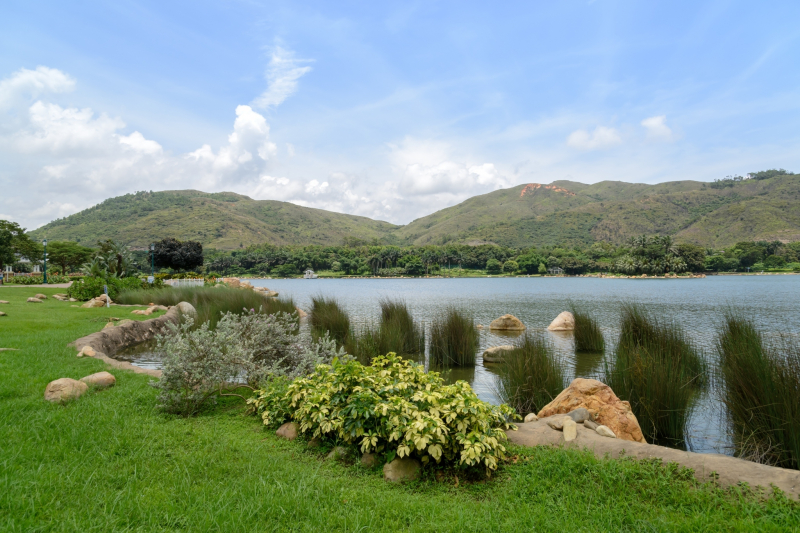
Photo: Time Out 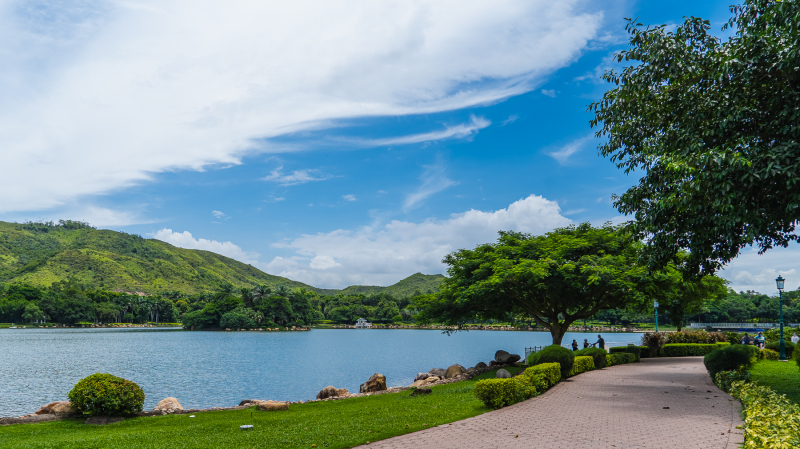
Photo: Greening -
No time for a full-day excursion? This zen sanctuary near Tsing Yi Station is ideal for those looking for a quick escape into nature's peace.
The Ornamental Lake has calm waters and floating lily pads, and its banks are adorned with a cascading waterfall, towering trees, and European-style pavilions, providing plenty for your eyes to feast on and your soul to enjoy.
A captivating stretch of tall sabino trees by the lake with leaves that change from yellow to dark reddish-brown will welcome you as the temperature drops in the city. In contrast to the leaves of maple and sweet gum trees, this autumn foliage has smaller, feather-like leaves. Tsing Yi Park is one of the most beautiful places to visit in the fall because of the lovely color that envelops the lake.
Come in the fall, and you might even witness the breathtaking sight of brilliant red foliage standing out against the blue sky and crystal-clear water. In addition to the lake, the park's grounds have a ton of amenities to keep you occupied, like a variety of sports courts, a playground, and pebbled walking trails.
Location: Tsing Yi Park,Tsing Yi Island, Hong Kong
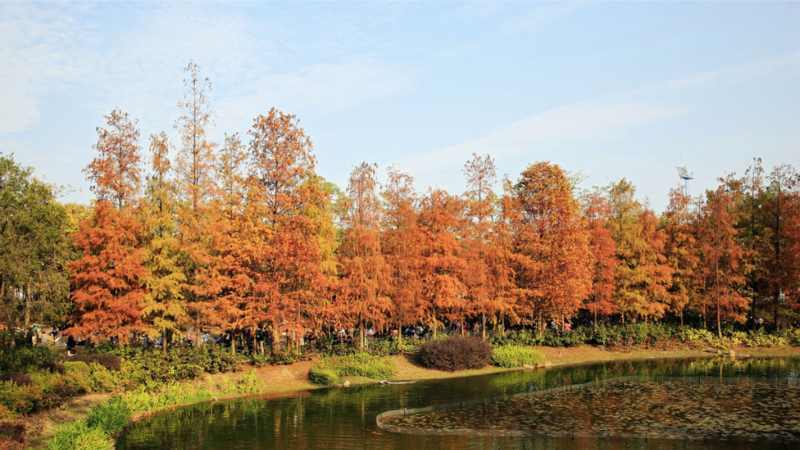
Photo credit: Simon Hung (Flickr) 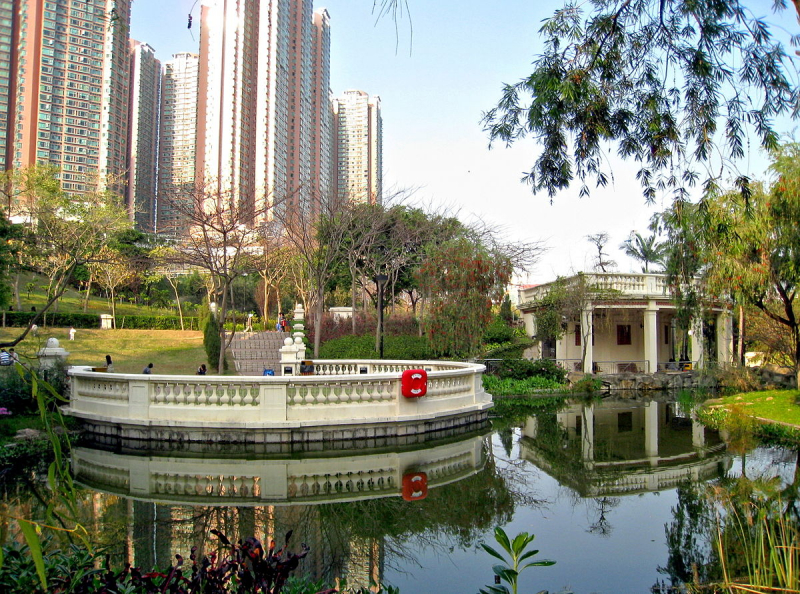
Photo credit: Wikipedia









